

Unclaimed: Are are working at Kontent.ai ?
Kontent.ai Reviews & Product Details
Kontent.ai is a headless CMS software best known for being a modular content platform that lets developers and marketers plan, create, and deliver experiences that look and feel great across various channels. It’s built to seamlessly support the working dynamics of teams, facilitating easy content production, modular content reuse, real-time collaboration, and approvals.

| Capabilities |
|
|---|---|
| Segment |
|
| Deployment | Cloud / SaaS / Web-Based |
| Support | 24/7 (Live rep), Chat, Email/Help Desk, FAQs/Forum, Knowledge Base, Phone Support |
| Training | Documentation |
| Languages | English |

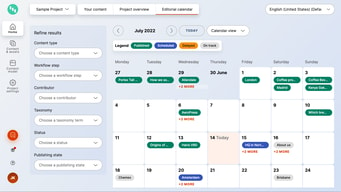
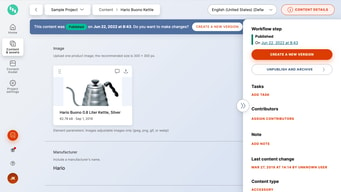
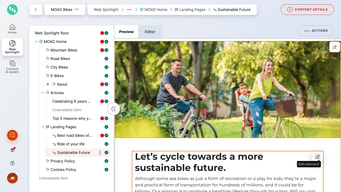
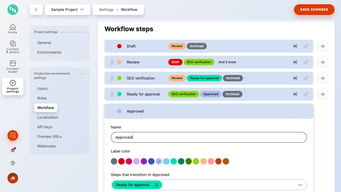
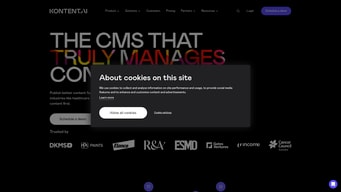
Compare Kontent.ai with other popular tools in the same category.

The userface is so simple and intuitive. Changes are automatically saved and multiple people can work on the platform at once. It's a collaboration wonder!
Nothing, but I would love to see more updates!
it allows us non-web development team folks to put content on our website and stay efficient.
For marketers, the user interface is easy to setup content models, create and schedule published content, add and manage user workflows and rules. For developers, the platform uses modern technology to give teams the ability to deploy fast websites and user experiences to consume content on any channel.
So far I have no complaints using the Kontent.ai platform. It will be interesting to see what future developments will look like as the platform continues to grow.
Konent.ai is making modern content management flexible for both marketing teams and development teams. The platform also allows the abilitiy to integrate with other headless commerce solutions providing a best in breed approach to headless content + commerce.
Ease of use, highly intuitive and straightforward to use.
Some clients might find it expensive to use
Decouples the content from the rest of our digital landscape allowing us to re-use it in various platforms.
A technically advance product delivered easily into the business and its users. It just works!
Suggestion - a 'recommendation' feature that crawls clients' sites and recommends specific partner apps that may be helpful, eg. Your site looks like it could use some help <insert app>.
We are moving faster, driving greater collaboration between marketing and tech teams, maturing in our digital journey and delivering better customer-experiences!
Having used a wide range of CMS over the past 10+ years, Kontent by Kentico is the easiest, simplest and best CMS I have used. The speed of adding and formatting content, image and other elements is great - makes the process of creating content that is engaging visually and for SEO straightforward and easy.
No dislikes. The Kentico team has always been fast and responsive to feedback, and they often roll-out practical improvements and updates. Compared to other CMS on the market Kontent by Kentico is superior.
We publish original content on a daily basis, and the speed of using Kontent by Kentico and populating content in the system means we can spend more time on creating great content and the SEO process.
Great Design, well-thought-through content types elements. web spotlight is great. SDK support is good enough, type support for typescript is helpfull.
No of operations to do a simple create is bit too many. create an item, lang variant, upsert,etc. why not just one call , that does everything behind the scenes, because most cases, all users want is upsert a record. I felt like the management sdk can be improved. Kentico main content and assets page search functionality can be improved, it takes a while when there are too many content items.
we don't have to think about building a backend API layer and admin screens to maintain them anymore. That's one less thing to worry about when building web apps.
Kontent.ai e-learning stands out. The authoring app is pretty clean and straightforward for a rookie, and I've had a fair share of content management solutions over the last two decades. What I was desperately in need of was understanding what headless content infrastructure is all about, how to model content, how to build a single source of truth for all the company's content, and — more importantly — why!
I didn't find anything to dislike — I was ready to start thinking differently about content and content management, and learning the new, more semantic approach. Although I acknowledge that the prospect of beginning with a "blank canvas" might be daunting for many people out there looking for a modern, future-proof solution.
We have had countless sources of disconnected content scattered over the company. It wasn't just the user-facing content on our webpage which was unhappily married to its form of presentation, but all the underlying content that is telling the story of our products and services which lived in domain silos, disconnected channels and forms unsuited for reuse. Not infrequently duplicated and deprecated. Kontent.ai gave us a venue to reimagine our content as a whole, and as individual, meaningfully related parts, that could be reused for current and future purposes.
The simple interface is intuitive and easy to use, and our full content library is right at my fingertips whenever I need to access it.
Working with multiple brands, it's easy to upload content to the wrong project folder - being able to colour-code different projects would be great!
They've been very accommodating when it comes to making modifications that suit our particular way of working, which is great!
It's super simple to model content as a semi technical business user. I love that I can get things started by building new models based on the marketing or business goals but also have my hands on how it works to ensure it will be easy to maintain. Having a tool likes this helps bridge gaps beetween business and IT.
It can be kind of expensive, sometimes user roles have been less flexible than I would like, controlling who can edit what can be a little tricky if you don't plan far enough ahead.
Combining configuration controls with content management. Allows us to create rule driven experiences that are easy to manage at a micro or macro level with shared components.
It is easy to use the tools in Kontent, the changes are showing up even faster, and is easy to explain to other people about how to use it since it is usable and user friendly
I honestly think it needs to be smarter when recognizing a pasted text since sometimes it has bullets but kontent recognizes them as squares and has to do it manually which takes longer.
I could see how the changes were appearing after in the app and in the website, it was amazing because before it could be time consuming and a little stressing.





